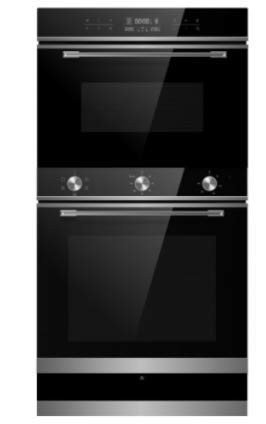The Most Innovative Things That Are Happening With Oven Hobs
The Essential Guide to Oven Hobs: Selecting the Right One for Your Kitchen
When it comes to home cooking, few home appliances are as vital as the oven hob. This flexible tool is important for a variety of cooking techniques— boiling, frying, simmering, and sautéing. Given the myriad of options offered on the marketplace, selecting the ideal oven hob for one's kitchen can be daunting. This post intends to supply an extensive appearance at oven hobs, discussing their types, functionalities, benefits, drawbacks, and crucial factors to consider when buying one.
Comprehending Oven Hobs
Oven hobs, typically called cooktops, are flat cooking platforms that include burners or heating elements. They can be integrated with an oven or stand-alone. The option of an oven hob can considerably affect cooking performance and convenience.
Types of Oven Hobs
Oven hobs are available in various types, each with distinct features. Below are the most typical types offered:
Type
Description
Advantages
Drawbacks
Gas Hobs
Uses gas or propane
Instantaneous heat and exact temperature level control; works well with all pots and pans
Requires a gas connection; less energy-efficient than electric
Electric Hobs
Use electric coils or convected heat
Easy to clean up; consistent heat distribution
Slower to warm up; can be less responsive than gas
Induction Hobs
Utilizes electromagnetic fields to heat pots and pans directly
Quick cooking; energy-efficient; simple to clean
Requires compatible pots and pans; normally more expensive
Ceramic Hobs
Flat glass-ceramic surface area with convected heat
Aesthetically pleasing; easy to tidy
Can be susceptible to scratching; slower to heat than induction
Key Features of Oven Hobs
When choosing an oven hob, several functions need to be taken into account:
Size & & Configuration: Available in numerous sizes, oven hobs can accommodate numerous pots and pans. Standard alternatives are generally 30, 36, or 48 inches wide.
Power Output: Look for hobs with differing power levels for various cooking processes. Visit Webpage -powered burners are exceptional for boiling, while lower-power ones can be used for simmering.
Control Types: Choose between knob controls and touch controls. Knobs provide tactile feedback, while touch controls offer smooth designs and extra functionalities.
Safety Features: Options like automated shut-off, kid locks, and flame failure devices are important for preventing accidents.
Alleviate of Cleaning: Choose models with smooth surface areas or detachable parts for easy upkeep.
Benefits and Disadvantages
Understanding the benefits and drawbacks of different oven hobs can assist in making an informed choice.
Benefits
- Versatility: Suitable for various cooking approaches, from boiling to frying.
- Speed: Many hobs heat quickly, specifically induction designs.
- Energy Efficiency: Some options, like induction hobs, can decrease energy intake compared to conventional techniques.
Downsides
- Cost: High-end models, especially induction hobs, can be costly.
- Installation: Gas hobs need professional setup and a gas supply, which might incur extra costs.
- Compatibility: Not all cookware works on induction hobs, necessitating extra purchases.
Buying Considerations
When picking an oven hob, think about the list below aspects:
Cooking Style: Assess how often and what type of cooking you do to figure out the very best hob type.
Kitchen Layout: Measure your kitchen space to make sure the hob fits and matches other devices.
Budget plan: Determine how much you are ready to invest. Consider setup and the cost of any necessary cookware.
Energy Source: Evaluate the accessibility of gas or the electrical capability of your kitchen to decide in between gas and electric choices.
Frequently Asked Questions About Oven Hobs
Q1: What is the distinction in between a cooktop and an oven hob?A cooktop and an oven hob generally describe the exact same device. Nevertheless,“cooktop “is a wider term that consists of both standalone hobs and integrated units with ovens. Q2: Can I utilize any pots and pans on an induction
hob?No, induction hobs require ferrous( magnetic)pots and pans
to work. Pots and pans made from material like stainless-steel or cast iron is ideal, while aluminum and copper without magnetic homes are not. Q3: How do I tidy my oven hob properly?Cleaning methods depend upon the type of hob.
Usually, a wet fabric and mild cleaning agent work for glass-ceramic surface areas, while a particular hob cleaner is ideal for induction. Gas hobs require taking apart burners for comprehensive cleansing. Q4: Are induction hobs safe for cooking?Yes, induction hobs are usually more secure than gas hobs as they do not produce an open flame,and the surface area cools down rapidly. A lot of designs also feature child safety locks. Q5: How often need to I replace my oven hob?The life-span of an oven hob differs based on the type and use. Typically, they last around 10 to 15 years.****
Routine upkeep can help extend this duration. Picking the perfect oven hob for your home can significantly improve your cooking experience. With a comprehensive understanding of the types, functions, benefits, and factors to consider, anyone can make an educated option. From the high heat of gas to the performance of induction, there is a hob suited to every cooking requirement. Ultimately, the best oven hob can change cooking from an ordinary job into an art form, allowing culinary enthusiasts to produce scrumptious meals with ease. 